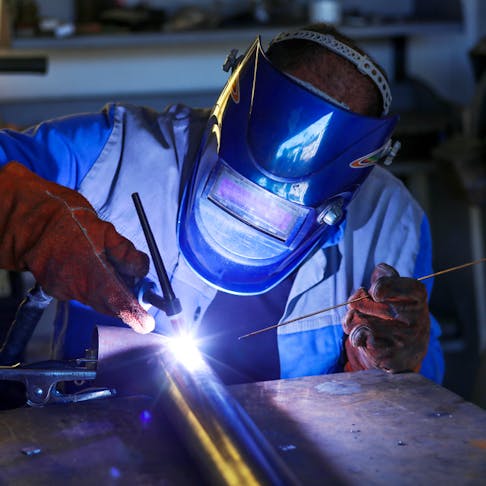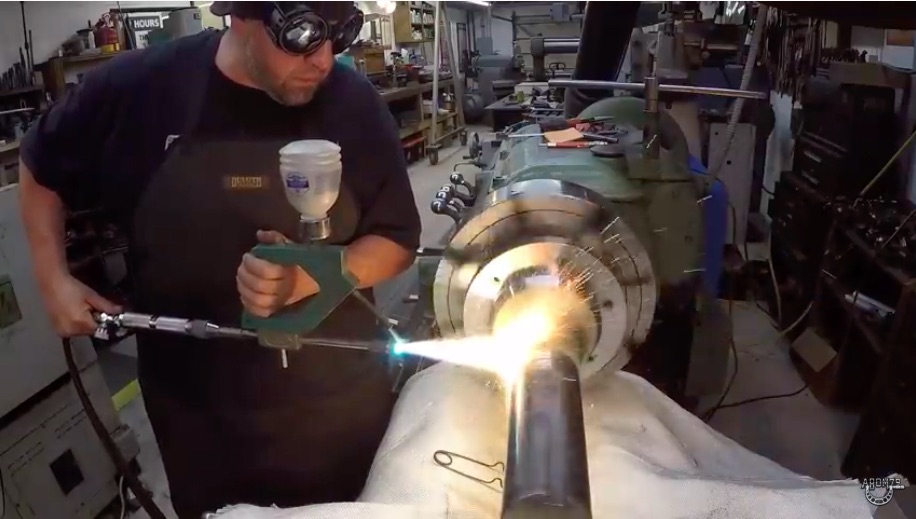Typical Welding Repair Work Issues and How to Address Them Efficiently
Welding fixings frequently run into a variety of problems that can endanger the stability of the last item. Common issues consist of inadequate infiltration, porosity, and imbalance, amongst others. Each issue offers distinct difficulties that call for particular methods for resolution. Comprehending these problems is necessary for welders aiming to enhance their skills and end results. This discussion will explore these usual welding repair issues and effective techniques to address them.
Insufficient Penetration
Poor infiltration happens when the weld steel stops working to fully fuse with the base material, leading to weak joints and potential architectural failures. This issue usually comes from inadequate warm input, inaccurate electrode angle, or inappropriate welding speed. Welders might come across poor penetration because of a mistake of the required specifications for a specific product density or kind. In addition, contamination on the base product's surface can hinder efficient bonding, exacerbating the problem. To deal with insufficient penetration, welders must guarantee proper setups on their devices and keep a tidy work surface. Routine inspection of welds is recommended to determine any deficiencies early, enabling timely corrections and the avoidance of compromised structural integrity in bonded assemblies.
Porosity
Porosity is a common problem in welded joints that shows up as tiny gas bubbles caught within the weld steel. This defect can jeopardize the stability of the weld, causing decreased toughness and prospective failing under anxiety. Welding. Porosity normally arises from contamination, moisture, or improper welding techniques, which permit gases to leave into the liquified weld swimming pool. To address porosity, welders need to guarantee correct surface area preparation, maintain a clean workplace, and utilize ideal welding criteria. In addition, selecting the best filler material and shielding gas can alleviate gas entrapment. Normal assessment and screening of welds can assist recognize porosity early, ensuring prompt corrective activities are taken, consequently maintaining the top quality and integrity of the bonded framework
Imbalance
Imbalance in welding can occur from different aspects, including improper configuration and thermal expansion. Understanding the origin is vital for effective resolution. Several modification techniques are readily available to straighten elements and ensure architectural integrity.
Root causes of Imbalance
Welding imbalance often stems from a selection of underlying problems that can compromise structural integrity. One main cause is inappropriate fit-up of elements prior to welding, which can result in gaps and uneven surfaces. Variations in thermal development throughout the welding procedure can additionally result in distortion, especially if the products being joined have different coefficients of development. Furthermore, insufficient fixturing and clamping may fail to hold components securely in position, causing motion during welding. Poorly kept equipment, including welding equipments and devices, might introduce disparities in the weld grain, more adding to misalignment. Driver error, stemming from not enough training or experience, can additionally play a considerable role in producing misaligned welds.

Improvement Techniques Available
Resolving misalignment properly needs a combination of corrective methods tailored to the specific issues handy. One usual technique is making use of jigs or fixtures to hold elements in the appropriate setting throughout welding, making sure constant alignment. Furthermore, pre-heating the materials can help in reducing distortion and improve fit-up. For considerable imbalance, mechanical adjustment strategies, such as using hydraulic jacks or clamps, can be utilized to fix the position prior to welding. Post-weld warmth treatment might also be required to soothe stresses created by misalignment. Lastly, cautious examination and adjustment during the configuration phase can prevent misalignment problems from ending up being considerable issues, promoting a smoother welding process and enhancing total architectural stability.
Distortion
Distortion is a typical obstacle in welding that can occur from different variables, including unequal home heating and air conditioning. Comprehending the root causes of distortion is crucial for implementing efficient avoidance techniques. Resolving this concern not just boosts structural honesty however additionally boosts the general quality of the weld.
Sources of Distortion
When subjected to the intense warmth of welding, materials usually undergo changes that can result in distortion. This phenomenon mostly develops from thermal development and tightening throughout the welding process. As the weld area heats up, the product expands; upon cooling, it gets, which can create interior anxieties. In enhancement, uneven heating throughout a workpiece can worsen these tensions, resulting in bending or flexing. The sort of material also plays a substantial duty; steels with differing thermal conductivity and coefficients of growth might respond in a different way, causing unpredictable distortions. Additionally, poor joint layout and poor fixturing can add to imbalance throughout welding, increasing the likelihood of distortion. Comprehending these causes is important for effective welding repair work and avoidance methods.
Prevention Techniques
Efficient prevention techniques for distortion throughout welding concentrate on managing heat input and making sure proper joint layout. Preserving a constant heat input aids to minimize thermal expansion and tightening, which can bring about distortion. Using strategies such as pre-heating the work surface can also lower the temperature slope, promoting uniform home heating. In addition, selecting proper joint layouts, such as T-joints or lap joints, can enhance security and reduce stress and anxiety concentrations. Applying proper fixturing to secure the workpieces in position additionally help in maintaining positioning during the welding procedure. Lastly, staggered welding sequences can distribute warm much more uniformly, stopping local distortion. By using these methods, welders can greatly decrease the possibility of distortion and enhance the general high quality of their welds.
Breaking
Cracking is an usual problem come across in welding repairs, often resulting from different elements such as incorrect air conditioning rates, material selection, or poor joint preparation. The incident of cracks can substantially compromise the integrity of the weld, leading to potential failures during operation. To resolve this issue, welders should initially assess the origin, ensuring that products work and properly picked for the specific application. Additionally, controlling the air conditioning price throughout the welding procedure is important; rapid cooling can generate tension and lead to breaking. Correct joint layout and preparation also add to decreasing the risk. Implementing these methods can boost weld high quality and toughness, eventually minimizing the possibility of cracking in completed weldments.

Incomplete Combination
A substantial concern in welding repair services is incomplete fusion, which happens when the weld metal does not sufficiently bond with the base material or previous weld passes - Montana Mobile Welding and Repair. This issue can bring about weak points in the joint, possibly compromising the integrity of the welded structure. Aspects adding to insufficient combination include inadequate heat input, inappropriate welding technique, and contamination of the surfaces being signed up with. To resolve this concern successfully, welders need to ensure proper pre-weld cleaning and surface area preparation, in get more info addition to adjust their welding specifications to achieve ample penetration and blend. Routine examination during the welding procedure can also aid identify incomplete combination early, permitting timely restorative procedures to improve the total top quality of the weld
Overheating
While welding repairs can boost structural stability, overheating offers a significant obstacle that can bring about product destruction. Excessive heat throughout welding can modify the mechanical buildings of steels, resulting in lowered stamina, increased brittleness, and bending. This phenomenon is specifically crucial in high-stress applications where architectural integrity is critical. Recognizing getting too hot can entail visual inspections for discoloration or distortion, along with checking temperature during the welding process. To mitigate the threats connected with overheating, welders should employ ideal techniques, such as regulating warm input, readjusting travel speed, and utilizing appropriate filler materials. Furthermore, executing pre- and post-weld warmth therapies can help recover material residential or commercial properties and enhance the total quality of the fixing, ensuring long-lasting efficiency and security.
Often Asked Concerns
What Are the Common Indications of a Welding Problem?

Exactly How Can I Examine My Welds for High quality?
To evaluate welds for quality, one can utilize visual assessments, ultrasonic screening, and radiographic approaches. Each strategy ensures architectural integrity, identifies problems, and confirms adherence to specified criteria, inevitably enhancing the dependability of the welded joints.
What Safety and security Precautions Should I Take While Welding?
When welding, one need to prioritize security by using proper personal protective devices, making sure correct air flow, securing flammable products away, preserving a tidy workspace, and being aware of surroundings to avoid injuries and mishaps.
Can I Repair a Weld Without Remodeling the Entire Joint?
Repairing a weld without redesigning the whole joint is feasible, depending upon the damage (Belgrade Fabrication). Strategies such as grinding, adding filler material, or making use of a welding process can successfully attend to details flaws while protecting the surrounding framework
What Equipment Are Important for Effective Welding Fixes?
Crucial tools for efficient welding repairs include a welding device, cord brush, mill, safety equipment, clamps, and filler products. Each device plays an important duty in guaranteeing top quality and security throughout the repair service procedure. Porosity commonly develops from contamination, wetness, or incorrect welding techniques, which permit gases to get away into the liquified weld swimming pool. Inadequately conserved tools, including welding devices and tools, might introduce inconsistencies in the weld bead, more contributing to imbalance. When subjected to the intense warm of welding, products typically go through adjustments that can lead to distortion. Cracking is an usual issue come across in welding repair work, usually resulting from various aspects such as improper air conditioning prices, product selection, or poor joint prep work. A substantial concern in welding repair work is insufficient fusion, which occurs when the weld steel does not properly bond with the base material or previous weld passes.